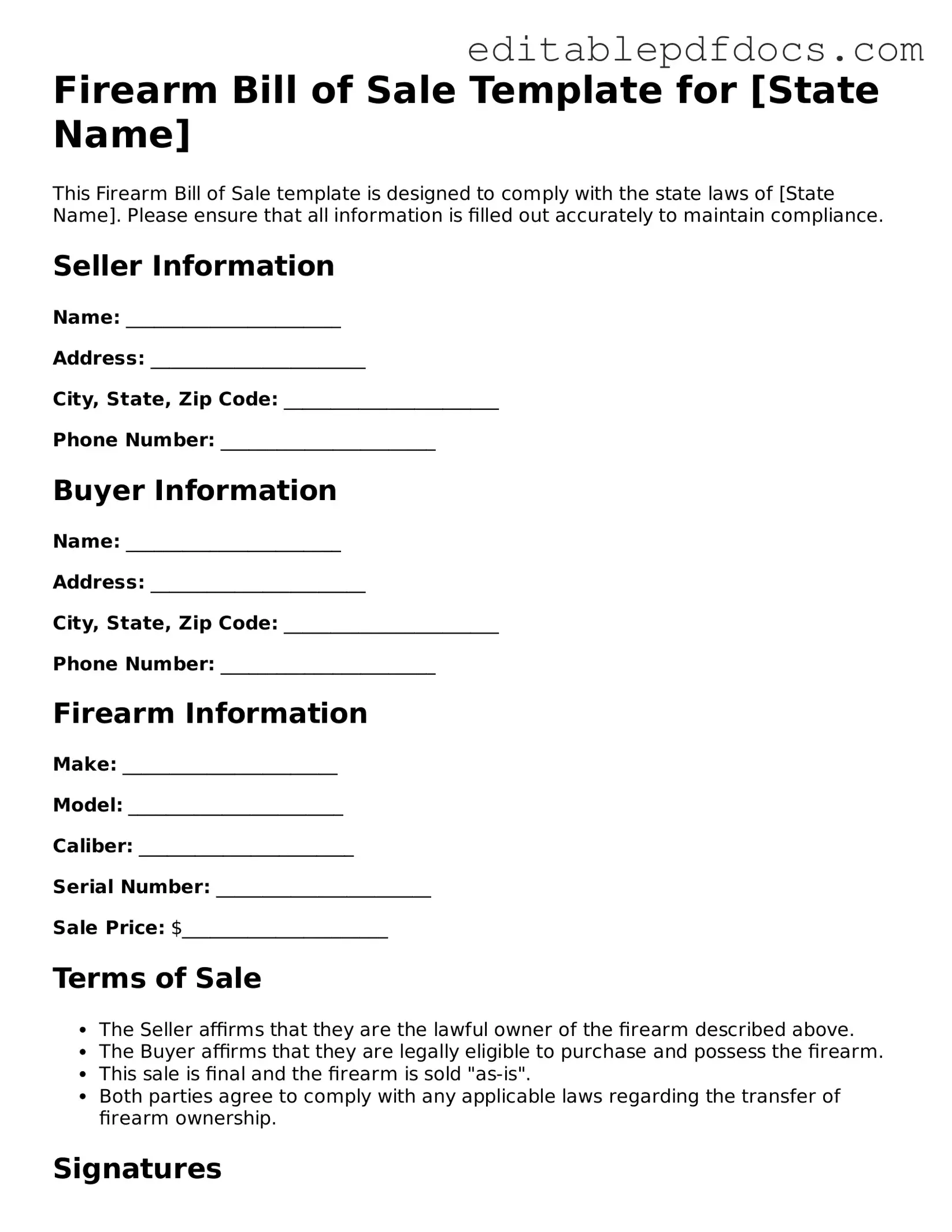Filling out a Firearm Bill of Sale form can seem straightforward, but many people make common mistakes that can lead to complications down the line. One frequent error is failing to include all required information. Each party involved in the transaction must provide their full name, address, and other pertinent details. Omitting even one piece of information can render the document incomplete.
Another mistake is not signing the form. Both the seller and the buyer need to sign the Bill of Sale to validate the transaction. Without signatures, the document may not hold up in legal situations, which could create issues if disputes arise later.
People often overlook the importance of accurate descriptions of the firearm. It’s crucial to include the make, model, caliber, and serial number. A vague description can lead to misunderstandings or legal challenges, especially if the firearm is ever questioned by law enforcement.
Additionally, some individuals forget to include the date of the transaction. This detail is essential for record-keeping and may be required for any future reference. Without a date, it can be difficult to establish when the sale took place.
Not keeping a copy of the completed form is another common oversight. Both parties should retain a copy for their records. This ensures that each party has proof of the transaction, which can be invaluable if any issues arise later.
Another mistake involves not checking local laws regarding firearm sales. Regulations can vary significantly by state and even by county. It’s important to ensure that the sale complies with local laws to avoid potential legal issues.
People sometimes rush through the process, leading to errors in the information provided. Taking the time to double-check each entry can prevent mistakes that might complicate the sale or create legal problems in the future.
Lastly, failing to include any necessary disclosures can be a significant error. If the firearm has any defects or issues, these should be clearly stated in the Bill of Sale. Transparency helps build trust between the buyer and seller and can prevent disputes down the line.
